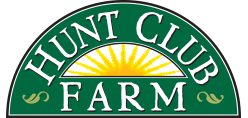Blogging on the Farm!
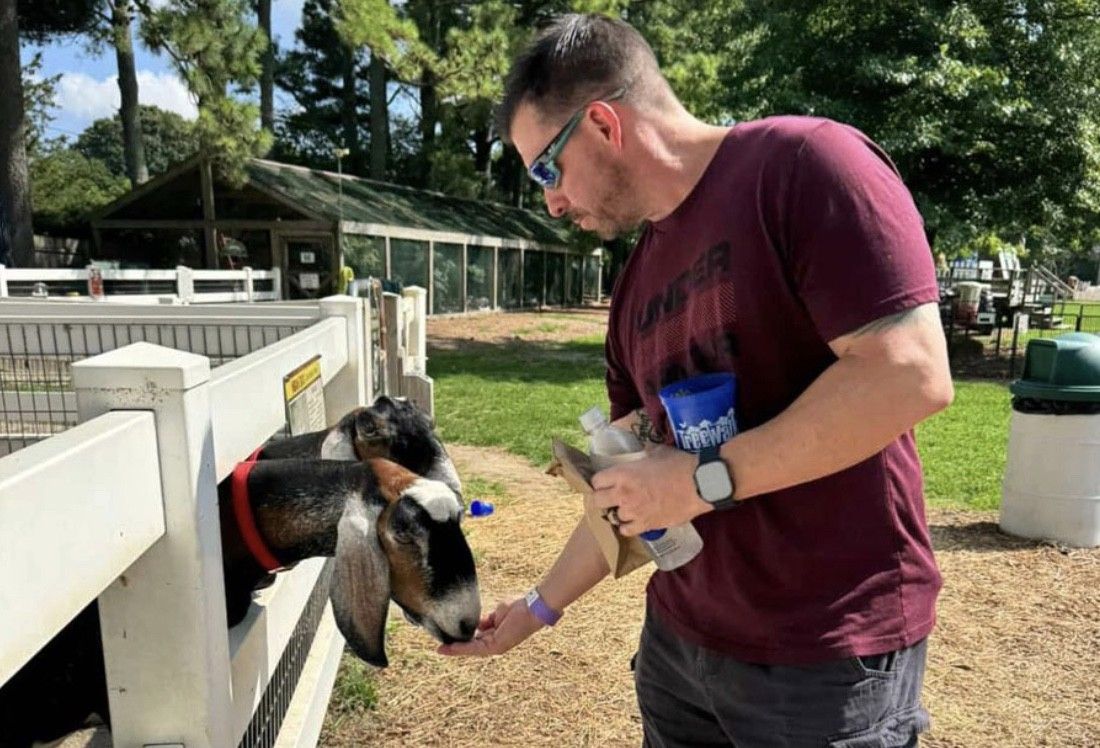
FARM FACT Animals in the Summer Heat At Hunt Club Farm, the well-being of our animals means everything to us—especially during the hot summer months. We take great care to ensure that each animal stays cool, comfortable, and safe when temperatures rise. Our team follows thoughtful, proven practices: providing plenty of shade and rest breaks, offering fresh, cool water at all times, and carefully monitoring every animal throughout the day. We know how much our animals mean to the families who visit us—and they mean just as much to us. Their care is not just a task, it’s a commitment made with love, each and every day.
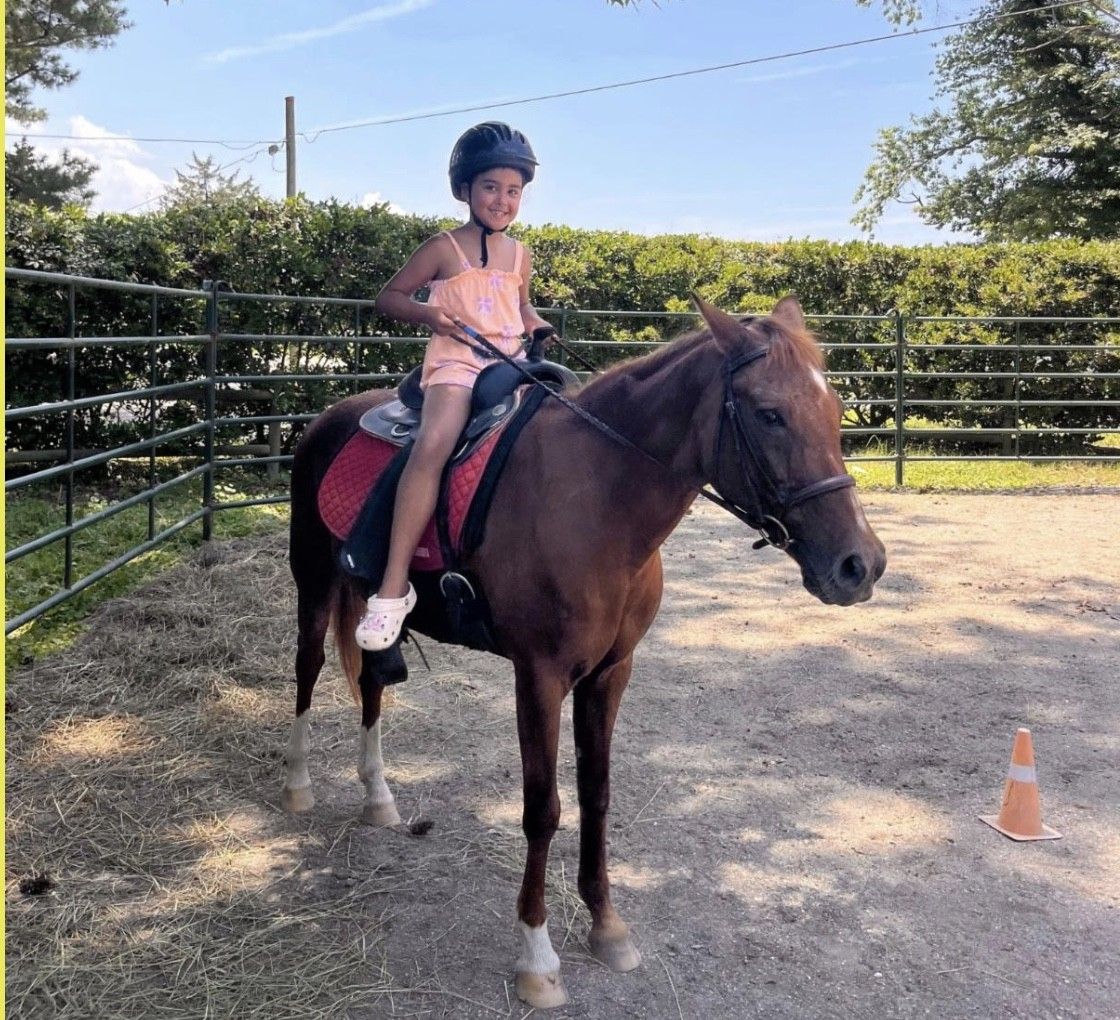
Critter Corner Meet Cali Cali is a 19-year-old Quarter Horse with a beautiful chestnut coat, weighing 798lbs and standing 13 hands high. Cali previously lived at Roseoldian Farm in Pungo. She did lessons and showed in the local Hunter circuit. She came to Hunt Club Farm in December 5, 2016 to be part of our Summer Camp Riding Lesson Program and for Pony Rides. Cali is playful and sassy, yet sweet, and has a way of stealing the hearts of pony handlers and staff alike. Her charming personality and affectionate nature make her a joy to be around, brightening the day of everyone she meets.
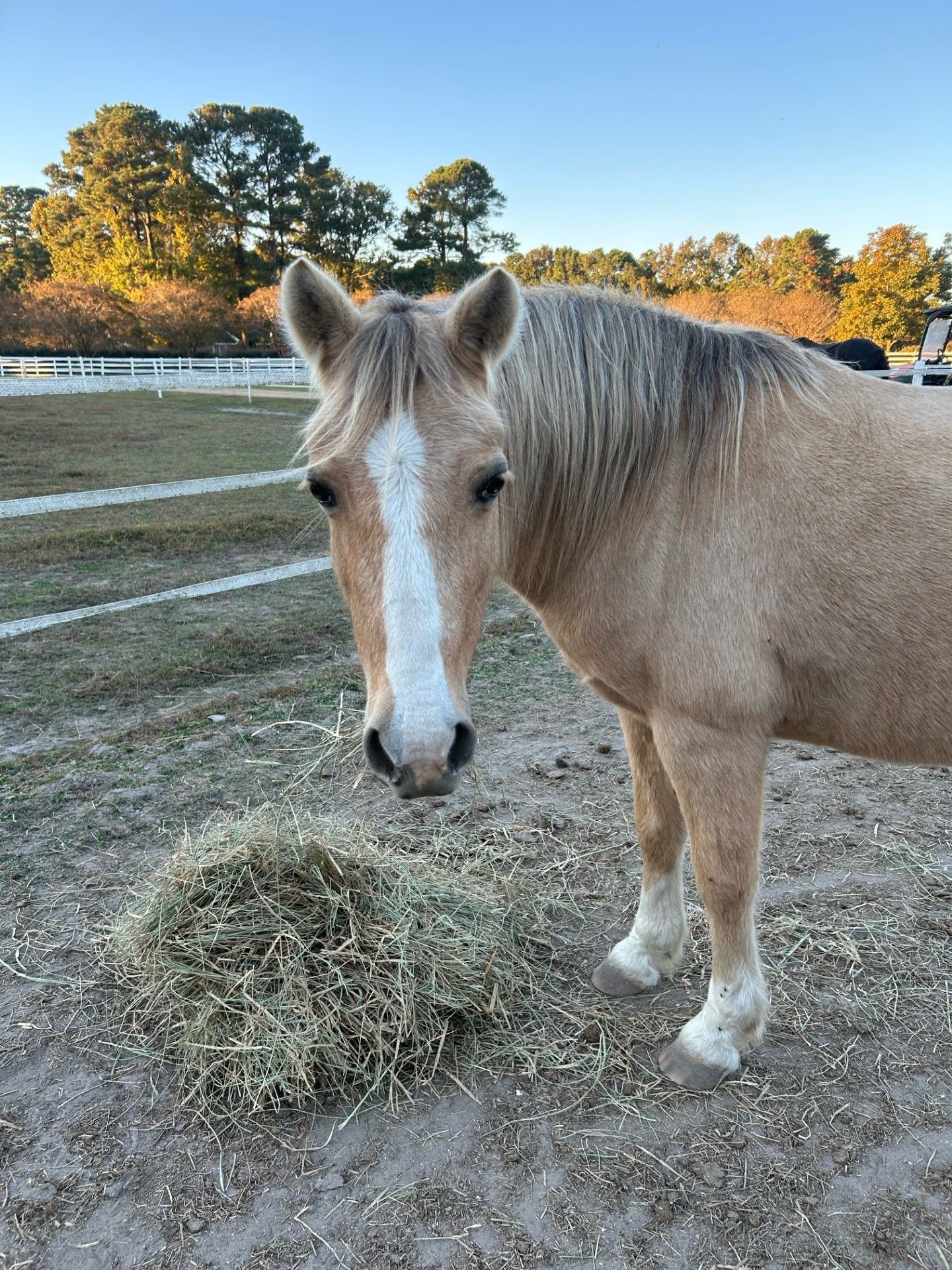
Sandy is a 17-year-old palomino grade pony who has been part of the Hunt Club Farm family since June 24, 2021. She stands 12 hands tall, weighs 683 pounds, and brings a gentle, sunny presence to the farm. Before coming to Hunt Club, Sandy lived at Triple R Ranch, where she was known as “Tinkerbell” and enjoyed life as a basic hunter-jumper pony. She also spent time on trail rides and was comfortable in both English and Western saddles. Her name was changed to Sandy to better reflect her easygoing personality and sand colored coat; the name has suited her perfectly ever since. Sandy is part of our Summer Farm Camp horseback riding lesson program where she teaches new riders the basics of horseback riding. The kids love her, and she enjoys having a purpose outside of daily pony rides. You can meet Sandy by joining our Summer Farm Camp or at the pony ride line some days.
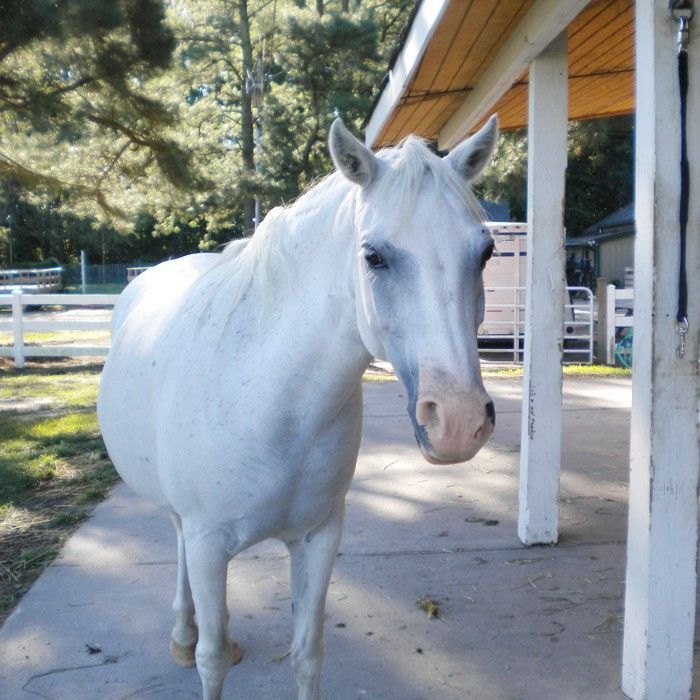
For more than two decades, Madison has been a beloved part of the Hunt Club Farm family. This fine-boned, gray Welsh pony has spent 21 years teaching young riders, winning hearts, and helping shape the farm’s summer camp riding program. Before her time here, she was a decorated local show horse, earning ribbons and recognition in local competitions. At 12.1 hands (about 4 feet tall at her neck) and weighing 625 pounds, Madison is the perfect size for beginner riders. She’s gentle, patient, and sweet—traits that have made her a favorite among staff, campers, and visitors alike. English riders especially admire her breed for its elegance, agility, and versatility in the show ring. Madison doesn’t wear horseshoes since she mostly strolls the grassy grounds, but her feet are trimmed every 6–8 weeks, and she gets the royal treatment with annual dental care and visits from a chiropractor twice a year. She also never says no to apple horse treats or a crunchy carrot, and because of her pink nose, she always sports sunscreen during sunny summer days. As all gray horses do, Madison’s coat has transitioned from a dappled gray to a soft, snowy white over the years—proof of her long, graceful journey. From award-winning show pony to summer camp superstar, Madison is truly one of a kind—and always a Hunt Club favorite.
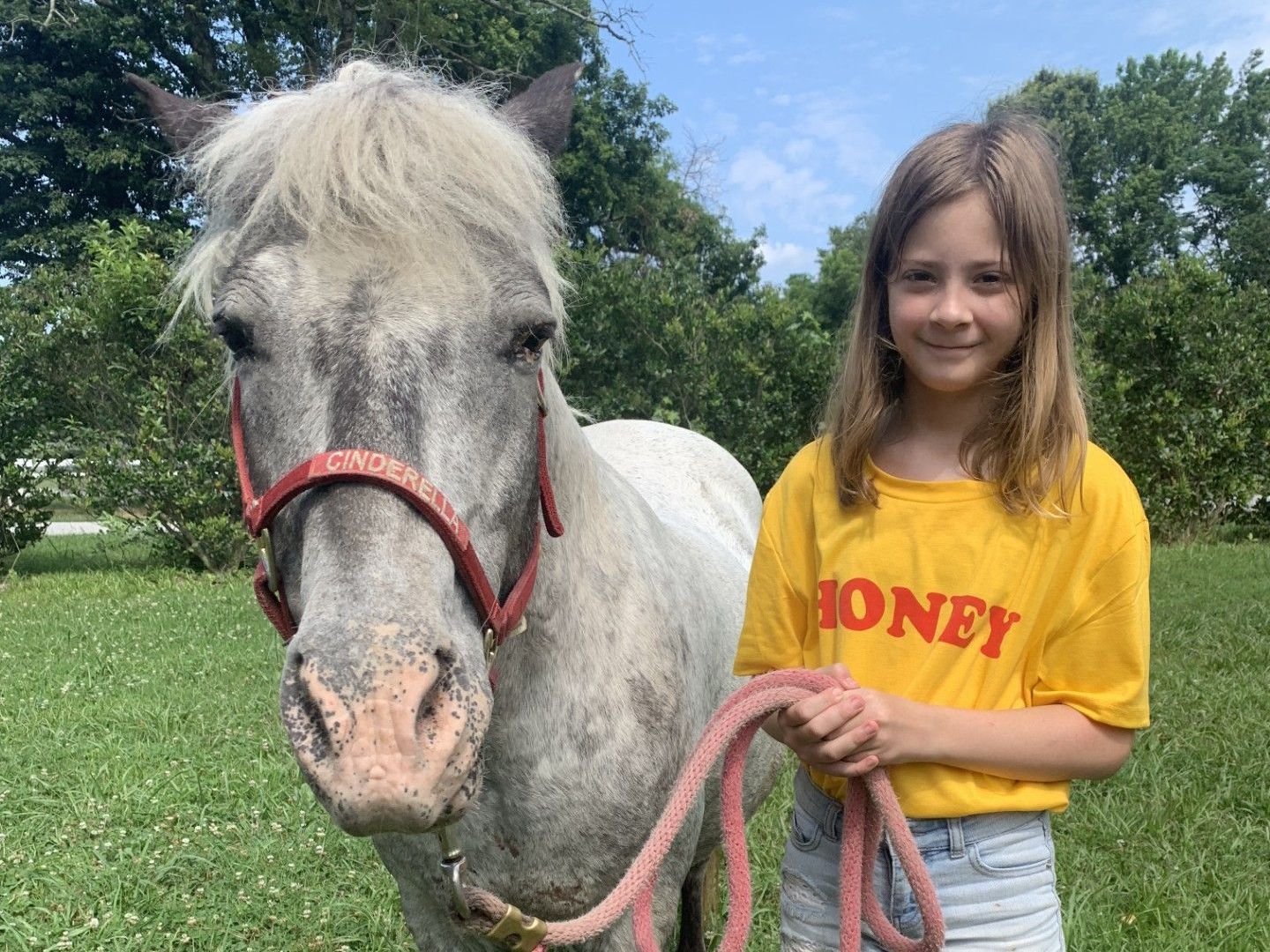
Cinderella, our princess pony, just turned 31 years old! Born in 1994, Cinderella first joined the farm family at the young age of 10 in 2004. Over the years, she has grown up with the farm, making countless memories with the people and animals here — including a few zebras along the way! Cinderella is a stunning Grade pony with a striking blue roan coat. Despite her age, she still has a youthful sparkle in her eye and an incredible zest for life. Her long-time companion, Bucket, is still by her side. The two of them are the oldest and longest-standing residents on the farm, living out their golden years happily together in the pasture. Even now, Cinderella isn’t ready to fully retire — she proudly holds one day a week on the pony line, because she genuinely loves having a job and staying active. Her energy is contagious, and she brings so much joy to everyone she meets. Affectionately known as a little “grass goblin,” Cinderella will do her best to sneak a nibble whenever she gets the chance, tugging you playfully toward the tastiest patches of grass. Her mischievous spirit only makes her more endearing! Throughout her years here, Cinderella has welcomed every new pony with kindness and a gentle spirit. In 2015, we took in an orphaned baby Zebra named Zoe. We knew she needed a mother figure to teach her the equine way of life, so we teamed her up with Cinderella. Cinderella immediately took to her and treated her as her baby. By the time Zoe matured into an adult Zebra, she thought she was a pony! She is truly a friend to all, and her presence has helped make Hunt Club Farm the warm, special place it is today. We are so lucky to have her as part of our farm family — and we look forward to many more happy memories with our sweet Cinderella.
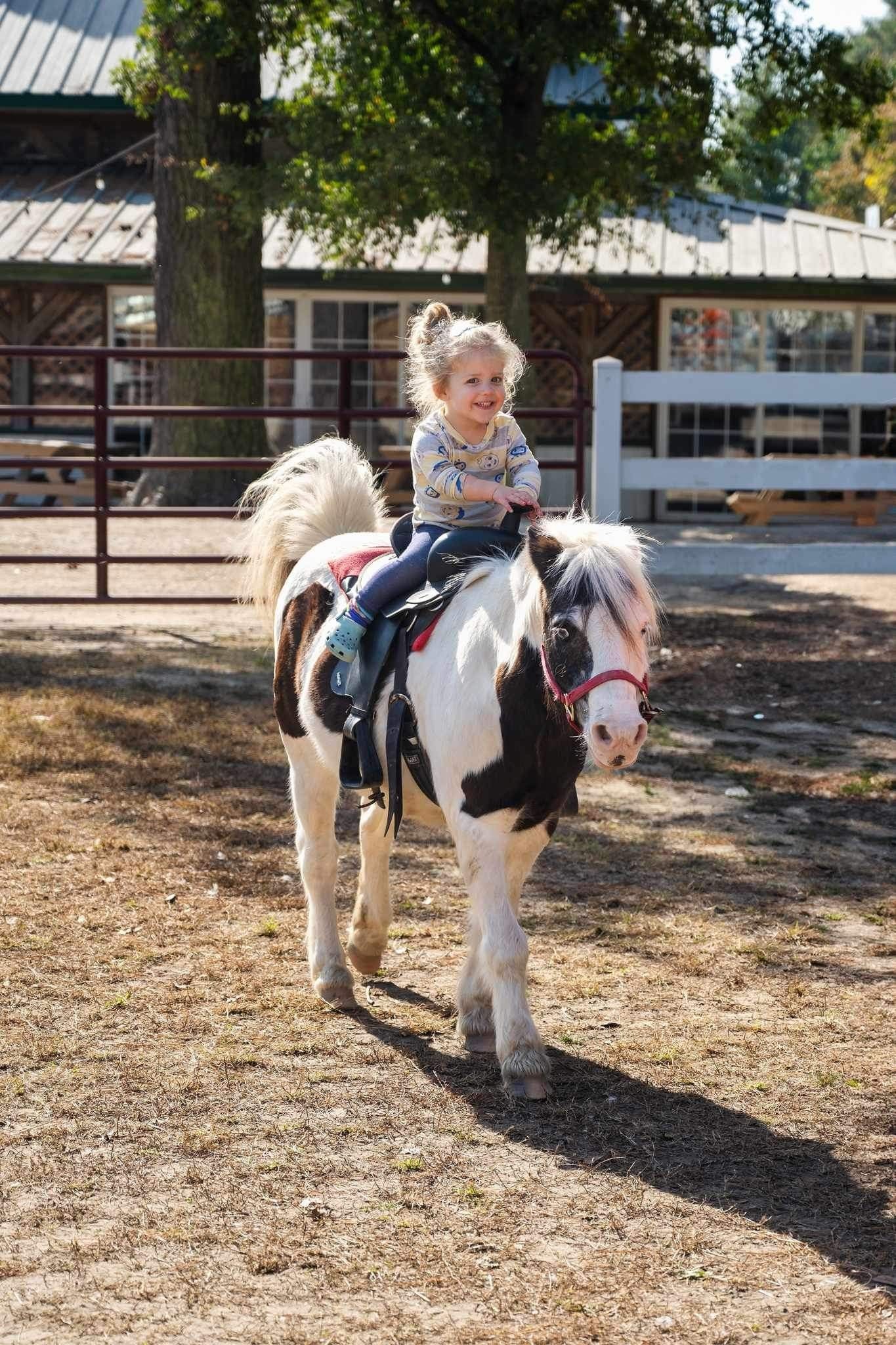
Welcome Back! This month, our featured pony is Patches! Patches was born in 2004 and came to Hunt Club Farm in 2021 at age 17 from North Carolina. Before that, he had spent most of his life in Texas, with only a brief stay in North Carolina. For most of his life, Patches gave rides to children, but when he first arrived at Hunt Club Farm, he was incredibly head shy and nervous about people touching his mane and tail. He would also become anxious at the sight of gloves. However, within just a few months of living at Hunt Club Farm, Patches experienced a major breakthrough- he finally laid down. In horses and ponies, laying down is a significant sign of trust and comfort, as it puts them in a vulnerable position. Over the past four years, Patches has transformed from a fearful pony into a loving and trusting companion. Patches is highly attuned to emotions. If you approach him feeling rushed, stressed, fearful or nervous, he will sense it immediately and react accordingly. While many animals can pick up on strong emotions through body language and actions, Patches has an almost uncanny ability to read people – he won’t let you fake your feelings. In a way, he serves as the ultimate test of patience and genuine care for animals for our staff. Around the same time Patches arrived, we also welcomed Penny (last month’s featured pony). The two are the same height and share similar markings, with Patches being black and white and Penny being red and white. It was love at first sight- Patches instantly became attached to Penny, never straying far from her side. Come to the farm and meet our blue eyed, child loving pony, Patches at the pony line!
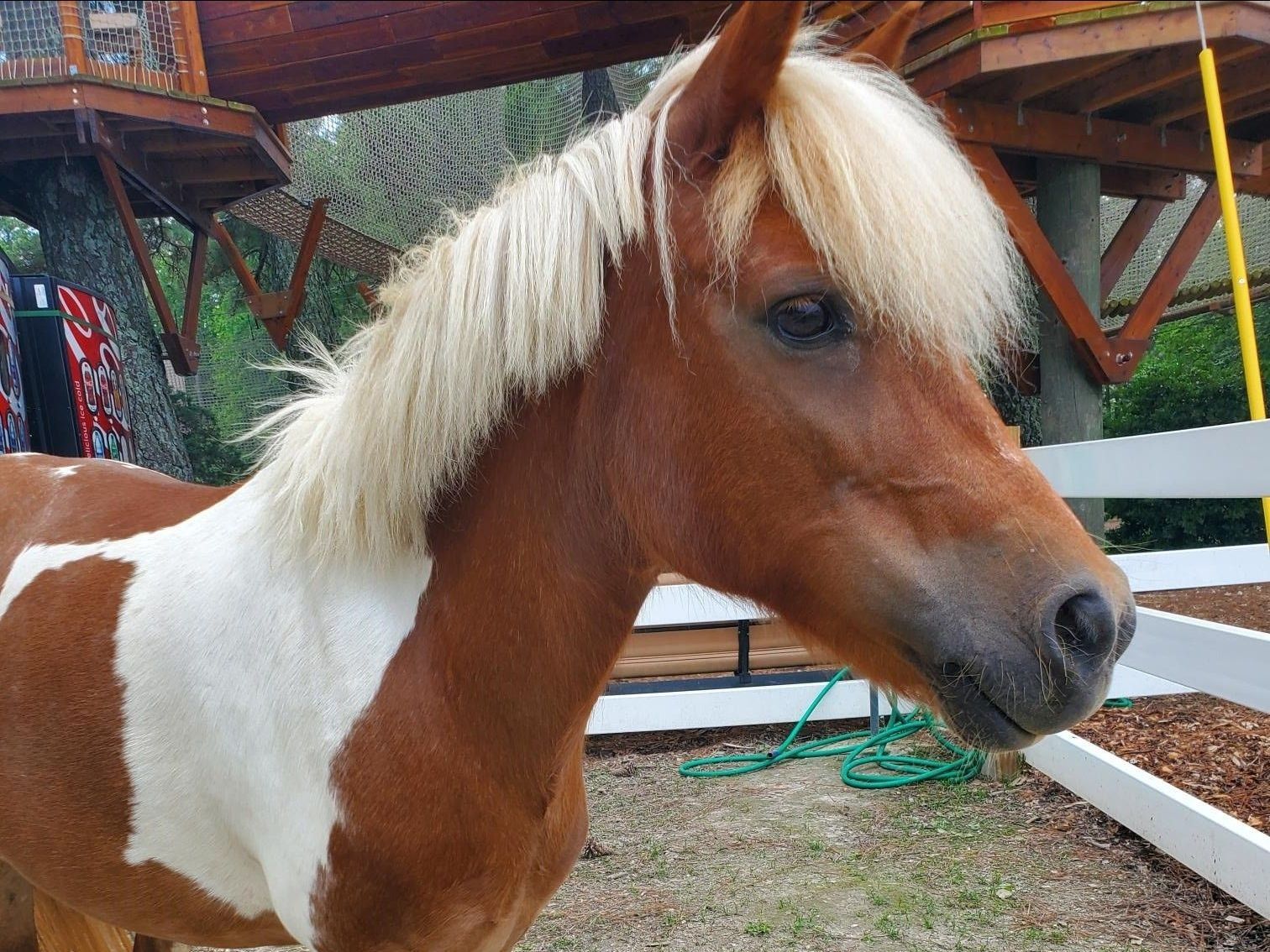
This month we want to introduce you to our sweet pony Penny! Penny (formerly named Aretha) came from the Totten Family farm in Suffolk where she was ridden daily by their daughter and gave lessons to other children. She was pastured with big horses and when their daughter outgrew her, the family looked for a new home where Penny would be with bigger ponies and ridden often! She was the perfect pony to come to Hunt Club Farm as she already enjoyed giving rides and was very well mannered. Upon arrival, our Animal Care team worked to desensitize Penny to other animals and to work with our team. Penny is 40 inches tall or 10 hands and 15 years old! She has been at Hunt Club Farm since 2021 and will continue being a pony ride favorite by all the children who visit! Hunt Club Farm is looking for ponies to add to our team! If you are looking to rehome or know someone looking to rehome a pony that is 11-12 hands, please contact our Petting Farm Managers at Pettingfarm@huntclubfarm.com .
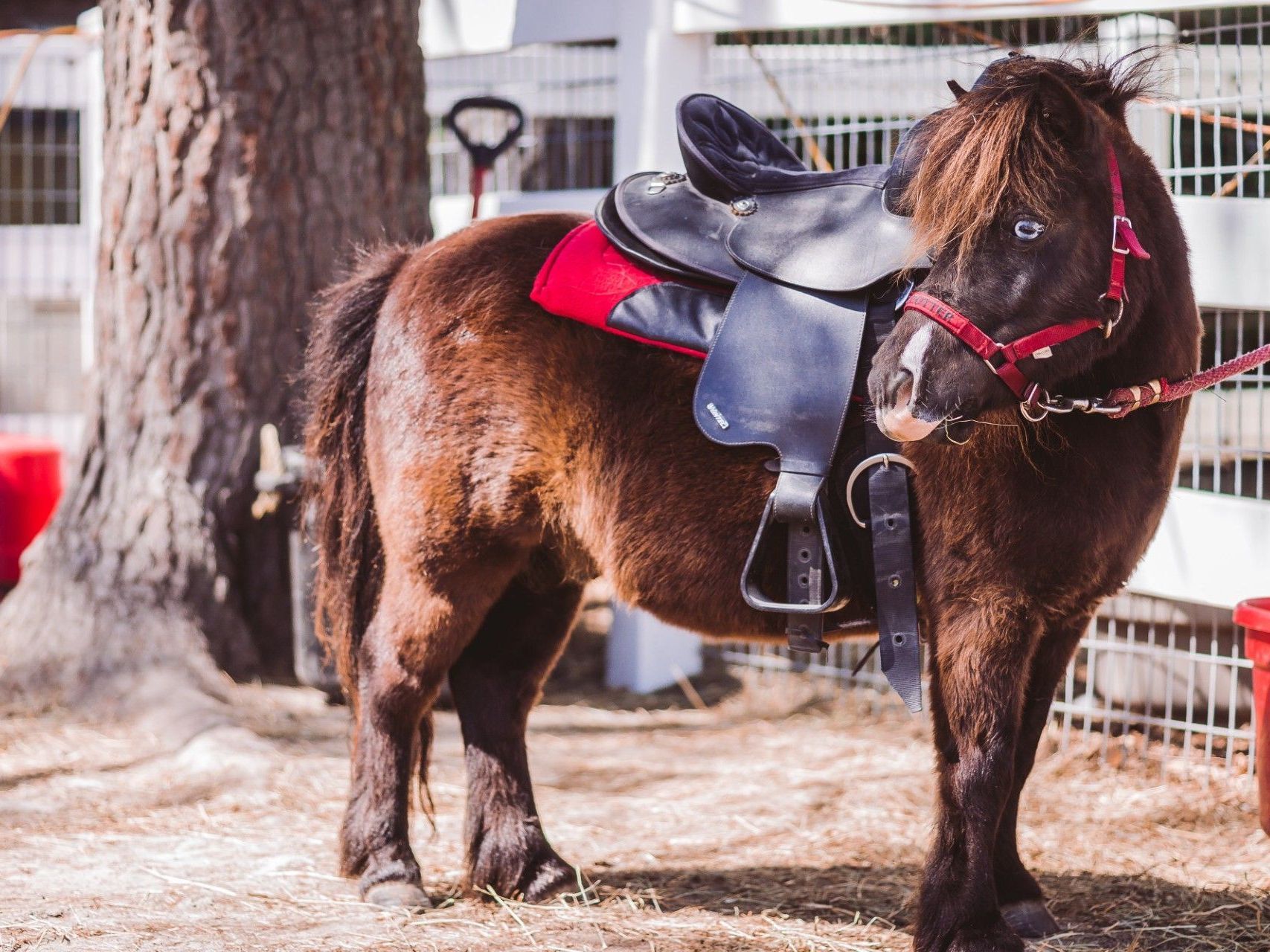
Meet Potter! Potter is a black miniature horse that came to Hunt Club Farm when he was only 4 years old and he will be 15 this year! Miniature horses are smaller than ponies and are bred to look like a scaled-down version of a full-sized horse. Prior to his arrival, he was trained as a therapy horse. He visited nursing homes, did some PR work with the Chesapeake Sheriff’s Department and helped to teach several young children to ride. Potter’s original name was Sterling and at that time we already had a farm cat named Sterling, so we decided to change his name. We decided to call him Potter- after Harry Potter because he has a white mark on his forehead just above his eyes and 1 “magical” blue eye. He is super sweet and has given thousands of local children their first pony ride. Potter is 32” tall which equals 8 hands. His weight averages about 375lbs. He has also been in several parades and done events all around Virginia Beach.
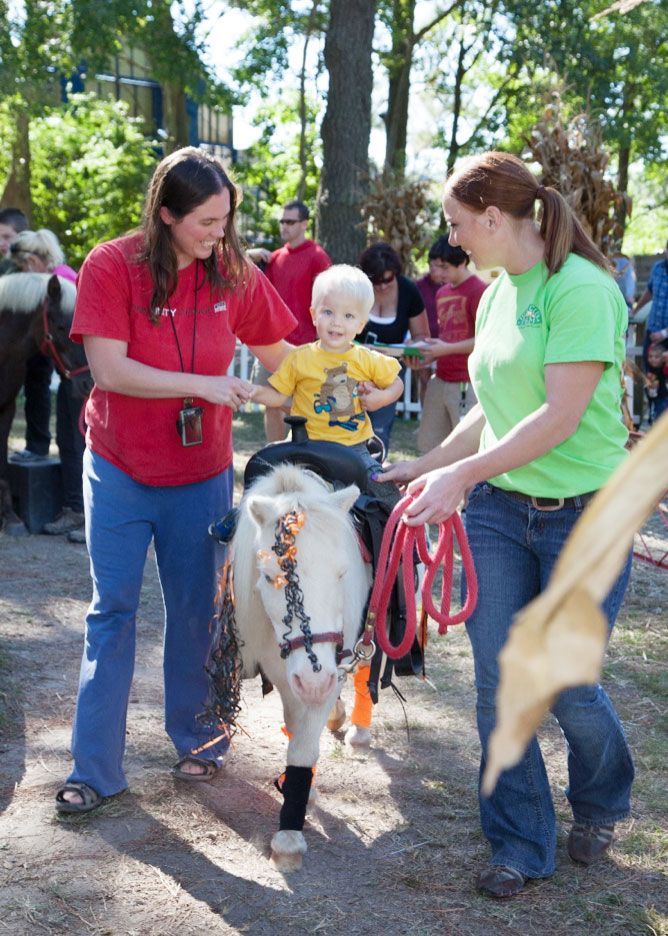
Meet Hunt Club Farms oldest and longest resident miniature horse, Bucket! Bucket was born in 1994 and gave pony rides for over 17 years. This past year, Bucket has been enjoying his retirement after all his hard work. He spends his days in the pasture with his girlfriend Cinderella by his side, grazing and frolicking to his heart’s content. He still loves to make an appearance every now and again for Storytime and for a bath from summer campers. Many don’t know but a miniature horse is very different from a pony. They are smaller than ponies in size, usually only growing up to 34 inches at the withers (shoulder) and weigh up to 350lbs. We like to call them FUN SIZE! They also live longer than ponies with a life span of 25-35 years compared to 20-25 years for ponies. Miniature horses are recognized as a service animal in the US and can be used as guide animals for the blind. Mr. Potter is our other Miniature Horse and we will have a story on him next month!
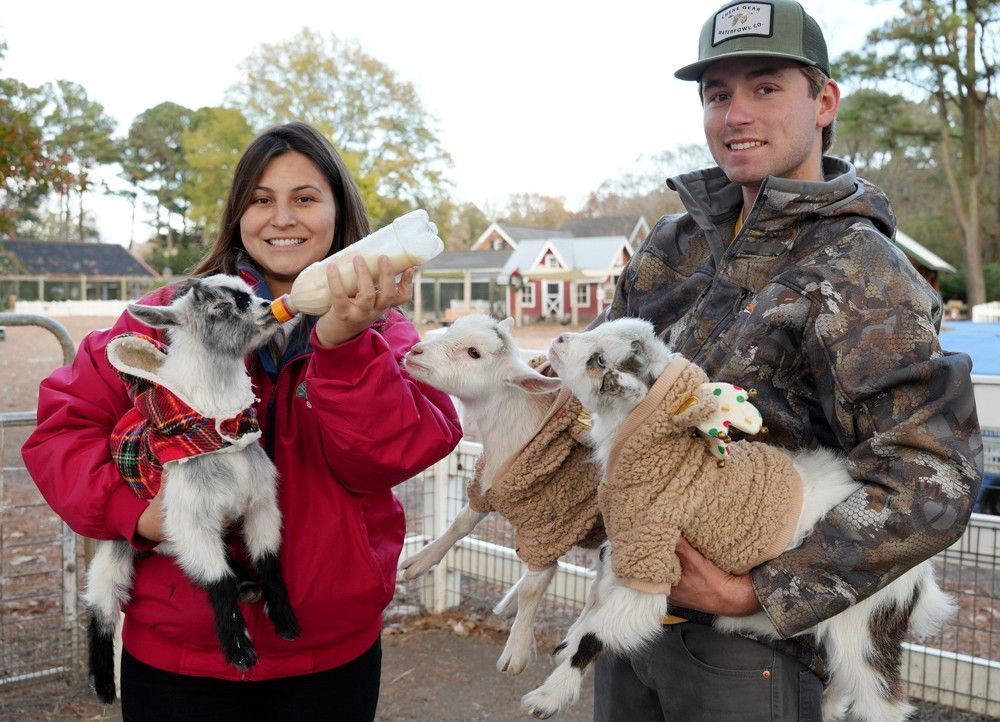
These three are Honey, Minnie, and Eeyore! Baby goats, also known as kids, drink milk until the age of 8-12 weeks. Most nannies or does (mother goats) nurse their babies until they are weened off milk and introduced to grain and hay. However, not all mothers are able to feed their babies, which was the case for Honey, Minnie, and Eeyore. Their mothers were not able to produce enough milk to keep them full so our Animal Care team took on the job to bottle feed them. At first, they are fed 4 times a day about 4-6oz for 10 days, then they are fed 7-12oz for another 10 days. At three weeks old, they are fed 12-16 oz three times a day until they are weened off milk at about 8-12 weeks old. Not only does bottle feeding ensure our kids are at a healthy weight, but this constant interaction with humans at a young age makes them enjoy human interaction at an older age as well. If you have the space and are interested in adding a baby goat or two to your heard, please contact the Petting Farm Managers to be put on the list for baby goats! You can email them at pettingfarm@huntclubfarm.com .
